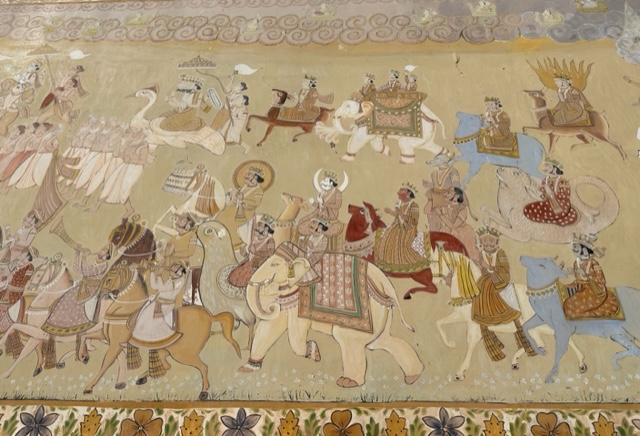Miniature Paintings in India...
3:07 p.m.
The images above correspond to scenes from Hindu mythology and episodes from the lives of the former inhabitants of the Palace, a certainly exuberant life that contrasts with the extreme delicacy of these miniatures. Love scenes between Lord Krishna and Radha are also included. Explicit sexual scenes of the gods are a constant in almost all the Palace collections. For example, at Jodhpur Palace there is a series dedicated exclusively to love in all its aspects: from conquest to marriage and consummation (important for reproduction). In this series, Maharaja Takhat Singh, who lived between 1813 and 1873, is the predominant figure, standing out for his volume from the secondary characters. He is depicted surrounded by female companions at his side or resting on his lap. These female figures perform all types of tasks, generally applicable to the male sex: they are guardians, horses-valet or cooks. The word "Singh" is part of the maharaja's name and it identifies the caste to which he belongs, in this case that of the warriors. Most of the maharajas, not to mention all of them, belonged to the warrior caste, which is not the highest in the pyramid: that corresponds to the priests.
Jodhpur Palace, India

















0 comentarios